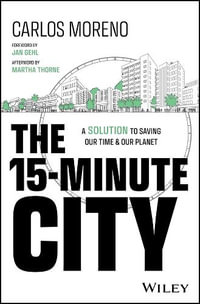This book discusses policies to achieve inclusive growth in India and realise the demographic dividend, which will end by 2040 when India will become an aging society. India is the world's fastest growing large economy, but jobs are not growing equally rapidly. The size of India's youth workforce is worrying, and the largely informal workforce is not covered by social insurance. Universal elementary education, despite the Right to Education Act 2009, is yet to be achieved. Health outcomes have improved only slowly over the years. Furthermore, sanitation still remains a very serious problem. As an economist and former policy-maker, the author discusses specific policies to address these problems, well beyond what is currently being practised. The book also deals with the governance issues that need to be addressed before inclusive growth can be attained.
Industry Reviews
'This is a topic of fundamental importance to the future development path of India. The script is exceptionally clearly structured and sharply written. This is a topical issue about which an increasing number of people are writing. However, the level of analysis in this volume is far above other analyses of this complex topic. This book is likely to be widely referred to and become a standard reference for debates about India's labour market and employment policies, and their relationship to growth and social justice in India.' Peter Nolan, Director of Development Economics, University of Cambridge
'India is at the mid-point of its demographic dividend, a half-century window of low dependency ratios before the effects of an ageing population kick in. India's remarkable growth in the last quarter century has not been as effective in poverty reduction as it could have been; the employment intensity of growth has been low and volatile, and women's labor force participation is on the decline despite growth in per capita income. This excellent book combines analytical sharpness and policy sensitivity to tackle the central issue of how to make best use of the demographic dividend for inclusive development. It will be of interest to analysts and policy makers alike.' Ravi Kanbur, T. H. Lee Professor of World Affairs and International Professor of Applied Economics and Management, Cornell University
'Mehrotra addresses each welfare dimension with crisp histories of programmes that were introduced for each area. Diagnosis flows naturally from these two elements and translates effectively into practical policy recommendations. This book will become a standard reference for anyone wanting to understand why things are the way they are in India's welfare state and what must be done about it.' Subir Gokarn, Former Governor, Reserve Bank of India and Director, Brookings India
'It is a highly topical subject: why did India fail to translate its fast growth into welfare for the poor? This is a thoroughly professional piece of work by a through and through professional. The book is basically empirical, although it has a theoretical foundation in the work of Amartya Sen and Martha Nussbaum.' Ajit Singh, Professor Emeritus in Economics, University of Cambridge
'... a magnificent book. Readers will be delighted with his empirically rich, sharp evidence-based analysis of India's development and his fine scrutiny of the country's strategic errors in its social and economic policy.' Flavio Comim, Journal of Human Development and Capabilities
























